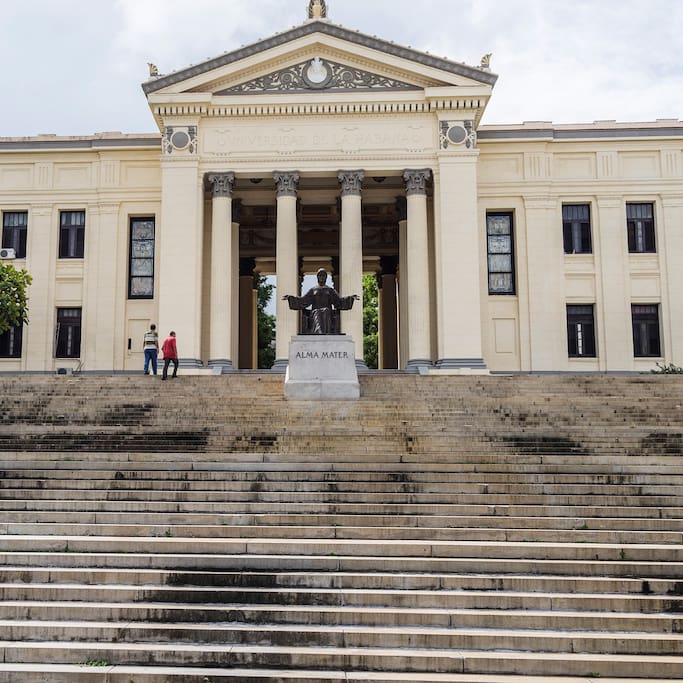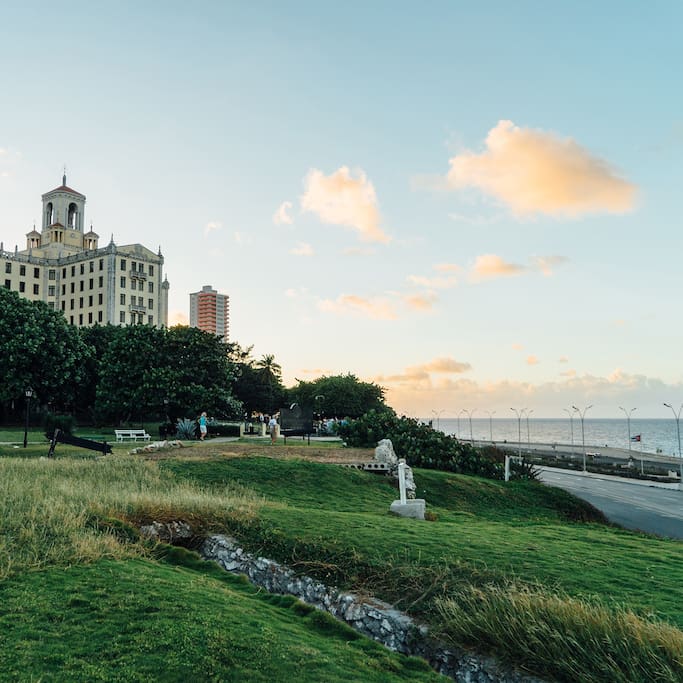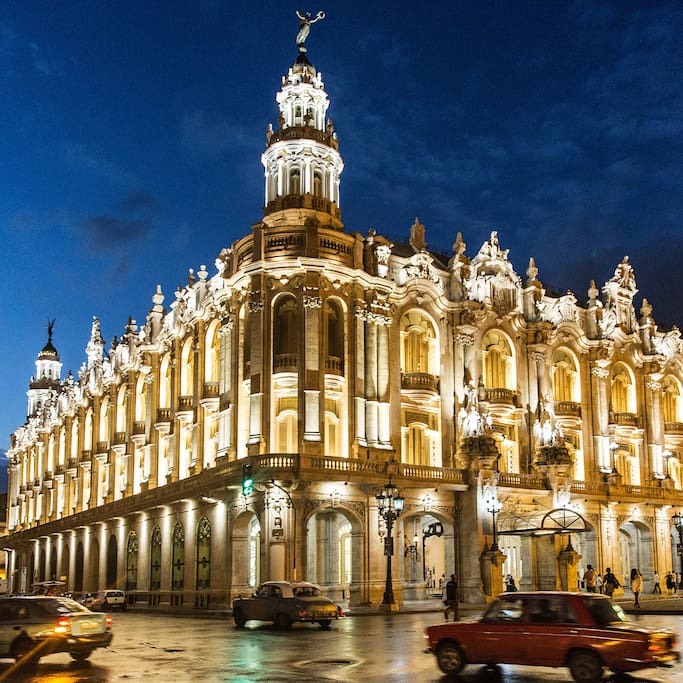Sightseeing
Morro Castle (Spanish: Castillo de los Tres Reyes Magos del Morro), named after the three biblical Magi, is a fortress guarding the entrance to Havana bay in Havana, Cuba. The design was drawn up by the Italian engineer Juan Bautista Antonelli; originally under the control of Spain, the fortress was captured by the British in 1762, and was returned to the Spanish under treaty terms a year later.
Havana Bay, c. 1639. by Johannes Vingboons
The Morro fortress in Havana shares its name with structures in Santiago de Cuba and the Castillo de San Felipe del Morro in San Juan, Puerto Rico. In this case, the Spanish "morro" means a rock which is very visible from the sea and therefore serves as a navigational landmark. Perched on the promontory on the opposite side of the harbor from Old Havana, it can be viewed from miles around as it dominates the port entrance. Built initially in 1589 in response to raids on Havana harbor, el Morro protected the mouth of the harbor with a chain being strung out across the water to the fort at La Punta.
566 명의 현지인이 추천하는 곳
Castillo De Los Tres Reyes Del Morro
Morro Castle (Spanish: Castillo de los Tres Reyes Magos del Morro), named after the three biblical Magi, is a fortress guarding the entrance to Havana bay in Havana, Cuba. The design was drawn up by the Italian engineer Juan Bautista Antonelli; originally under the control of Spain, the fortress was captured by the British in 1762, and was returned to the Spanish under treaty terms a year later.
Havana Bay, c. 1639. by Johannes Vingboons
The Morro fortress in Havana shares its name with structures in Santiago de Cuba and the Castillo de San Felipe del Morro in San Juan, Puerto Rico. In this case, the Spanish "morro" means a rock which is very visible from the sea and therefore serves as a navigational landmark. Perched on the promontory on the opposite side of the harbor from Old Havana, it can be viewed from miles around as it dominates the port entrance. Built initially in 1589 in response to raids on Havana harbor, el Morro protected the mouth of the harbor with a chain being strung out across the water to the fort at La Punta.
Arts & Culture
Plaza de la Catedral
The statue was carved out of white Carrara marble, the same material used for many of the monuments of the Colon Cemetery. The statue is about 20 metres (66 ft) high including a 3-metre (10 ft) base. It weighs approximately 320 tons. The statue was built from 67 blocks of marble that had been brought from Italy after being personally blessed by Pope Pius XII. The figure of Christ is standing with the right hand held near the chin and the left hand near his chest. Facing the city, the statue was left with empty eyes to give the impression of looking at all, from anywhere to be seen.
The sculpture, located in the Havana suburb of Casablanca, in the municipality of Regla, was inaugurated on La Cabaña hill on December 24, 1958. Just fifteen days after its inauguration, on January 8, 1959, Fidel Castro entered Havana during the Cuban Revolution.
The sculpture is located 51 meters (167 ft) above sea level, rising to a height of 79 metres (259 ft), allowing the locals to see it from many points of the city. There is a panoramic viewpoint at the site of the sculpture.
24 명의 현지인이 추천하는 곳
하바나의 그리스도상
The statue was carved out of white Carrara marble, the same material used for many of the monuments of the Colon Cemetery. The statue is about 20 metres (66 ft) high including a 3-metre (10 ft) base. It weighs approximately 320 tons. The statue was built from 67 blocks of marble that had been brought from Italy after being personally blessed by Pope Pius XII. The figure of Christ is standing with the right hand held near the chin and the left hand near his chest. Facing the city, the statue was left with empty eyes to give the impression of looking at all, from anywhere to be seen.
The sculpture, located in the Havana suburb of Casablanca, in the municipality of Regla, was inaugurated on La Cabaña hill on December 24, 1958. Just fifteen days after its inauguration, on January 8, 1959, Fidel Castro entered Havana during the Cuban Revolution.
The sculpture is located 51 meters (167 ft) above sea level, rising to a height of 79 metres (259 ft), allowing the locals to see it from many points of the city. There is a panoramic viewpoint at the site of the sculpture.
The Old Square (Spanish: Plaza Vieja) is a plaza located in Old Havana. The plaza was originally called Plaza Nueva (New Square). It emerged as an open space in 1559, after the Plaza de Armas and San Francisco. In colonial times it was a residential neighborhood of the Criollo plutocracy. Plaza Vieja was the site of executions, processions, bullfights, and fiestas - all witnessed by Havana's wealthiest citizens, who looked on from their balconies. The urban architectural complex of Plaza Vieja is represented by valuable colonial buildings from the XVII, XVIII and XIX and some examples of the early twentieth century.
413 명의 현지인이 추천하는 곳
구시가지 광장
San IgnacioThe Old Square (Spanish: Plaza Vieja) is a plaza located in Old Havana. The plaza was originally called Plaza Nueva (New Square). It emerged as an open space in 1559, after the Plaza de Armas and San Francisco. In colonial times it was a residential neighborhood of the Criollo plutocracy. Plaza Vieja was the site of executions, processions, bullfights, and fiestas - all witnessed by Havana's wealthiest citizens, who looked on from their balconies. The urban architectural complex of Plaza Vieja is represented by valuable colonial buildings from the XVII, XVIII and XIX and some examples of the early twentieth century.
The University of Havana or UH (in Spanish, Universidad de La Habana) is a university located in the Vedado district of Havana, the capital of the Republic of Cuba. Founded on January 5, 1728, the university is the oldest in Cuba, and one of the first to be founded in the Americas. Originally a religious institution, today the University of Havana has 15 faculties (colleges) at its Havana campus and distance learning centers throughout Cuba.
It was first called "Real y Pontificia Universidad de San Gerónimo de la Habana" (in English Royal and Pontifical University of Saint Jerome of Havana). During those times, universities needed a royal or papal authorization in order to be created and thus the names Real y Pontificia. The two men who gave that authorization to the university were Pope Innocent XIII and King Philip V of Spain.
In 1842, the university changed its status to become a secular, royal and literary institution. Its name became Real y Literaria Universidad de La Habana (in English, Royal and Literary University of Havana) and later, when Cuba was a free republic, the name was changed to Universidad Nacional (in English, National University).
The university had first been established in San Juan de Letrán (located in Villa de San Cristóbal in Old Havana) before it was transferred on May 1, 1902 to a hill in the Vedado area of Havana. The interiors of the building were decorated by Armando Menocal y Menocal. The seven frescos represent Medicine, Science, Art, Thought, Liberal Arts, Literature, and Law. At the main university entrance there is a bronze statue of Alma Mater (meaning the "Nourishing mother" in Latin) that was created in 1919 by artist Mario Korbel. The model for the statue's face was lovely 16-year-old Feliciana "Chana" Villalón, the daughter of José Ramón Villalón y Sánchez, a professor of analytical mathematics at the University. Chana later married Juan Manuel Menocal (a distant relative of Armando Menocal), who went on to become the Dean of the Business School. Juan Manuel Menocal was a professor at the law school when Fidel Castro was a student there in the 1940s. Maria Rosa Menocal, former Director of the Whitney Humanities Center at Yale, was the granddaughter of Chana and Juan Manuel Menocal.
The main library "Rubén Martínez Villena" was established later in 1936. After the government was taken over by Fulgencio Batista in 1952, the University became a center of anti-government protests. Batista closed the University in 1956. From January 1, 1959, the date on which Fidel Castro seized power in Cuba, until January 1, 1962, the University went through a period of reformation to eliminate 'anti-revolutionary ideas'
402 명의 현지인이 추천하는 곳
Universidad de la Habana
The University of Havana or UH (in Spanish, Universidad de La Habana) is a university located in the Vedado district of Havana, the capital of the Republic of Cuba. Founded on January 5, 1728, the university is the oldest in Cuba, and one of the first to be founded in the Americas. Originally a religious institution, today the University of Havana has 15 faculties (colleges) at its Havana campus and distance learning centers throughout Cuba.
It was first called "Real y Pontificia Universidad de San Gerónimo de la Habana" (in English Royal and Pontifical University of Saint Jerome of Havana). During those times, universities needed a royal or papal authorization in order to be created and thus the names Real y Pontificia. The two men who gave that authorization to the university were Pope Innocent XIII and King Philip V of Spain.
In 1842, the university changed its status to become a secular, royal and literary institution. Its name became Real y Literaria Universidad de La Habana (in English, Royal and Literary University of Havana) and later, when Cuba was a free republic, the name was changed to Universidad Nacional (in English, National University).
The university had first been established in San Juan de Letrán (located in Villa de San Cristóbal in Old Havana) before it was transferred on May 1, 1902 to a hill in the Vedado area of Havana. The interiors of the building were decorated by Armando Menocal y Menocal. The seven frescos represent Medicine, Science, Art, Thought, Liberal Arts, Literature, and Law. At the main university entrance there is a bronze statue of Alma Mater (meaning the "Nourishing mother" in Latin) that was created in 1919 by artist Mario Korbel. The model for the statue's face was lovely 16-year-old Feliciana "Chana" Villalón, the daughter of José Ramón Villalón y Sánchez, a professor of analytical mathematics at the University. Chana later married Juan Manuel Menocal (a distant relative of Armando Menocal), who went on to become the Dean of the Business School. Juan Manuel Menocal was a professor at the law school when Fidel Castro was a student there in the 1940s. Maria Rosa Menocal, former Director of the Whitney Humanities Center at Yale, was the granddaughter of Chana and Juan Manuel Menocal.
The main library "Rubén Martínez Villena" was established later in 1936. After the government was taken over by Fulgencio Batista in 1952, the University became a center of anti-government protests. Batista closed the University in 1956. From January 1, 1959, the date on which Fidel Castro seized power in Cuba, until January 1, 1962, the University went through a period of reformation to eliminate 'anti-revolutionary ideas'
Food Scene
Great night life! Dancing, live music and dinning by the ocean side. Mingle with locals and tourist for a promising night
50 명의 현지인이 추천하는 곳
Restaurant "1830"
JardinesGreat night life! Dancing, live music and dinning by the ocean side. Mingle with locals and tourist for a promising night
take a look the the link below which is the official website of the hotel. For some reason the map located this hotel wrong. The hotel is very close to the apartment.
http://www.hotelnacionaldecuba.com/
552 명의 현지인이 추천하는 곳
Hotel Nacional de Cuba
take a look the the link below which is the official website of the hotel. For some reason the map located this hotel wrong. The hotel is very close to the apartment.
http://www.hotelnacionaldecuba.com/
Drinks & Nightlife
Copy and paste the link below to appreciate why you should visit this place.
https://www.youtube.com/watch?v=wrxyEHEY59k
237 명의 현지인이 추천하는 곳
Cabaret Parisien
Calle OCopy and paste the link below to appreciate why you should visit this place.
https://www.youtube.com/watch?v=wrxyEHEY59k
Get a bit of a taste of what Casa de La Musica has to offer. copy and paste this youtube video link below
https://www.youtube.com/watch?v=tapST_q4O7o
427 명의 현지인이 추천하는 곳
Casa de la Musica de Centro
Get a bit of a taste of what Casa de La Musica has to offer. copy and paste this youtube video link below
https://www.youtube.com/watch?v=tapST_q4O7o





